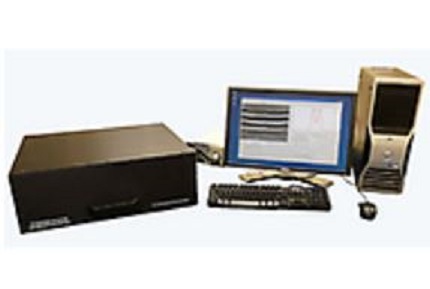Choosing the Best-Suited Optical Fibre Diameter Analyser for High Precision
Unlock Accuracy: The Ultimate Overview to Optical Fibre Size Analyser Devices
Exact measurement of optical fiber size is necessary for boosting the performance and reliability of fiber optic systems. As we examine these tools, it becomes evident that the future of optical fiber analysis is developing swiftly, increasing questions about just how these developments will impact the market.
Importance of Optical Fiber Dimension
Accurately gauging optical fiber diameter is critical in making sure optimum performance and dependability in interaction systems. The size of optical fibers directly impacts their light transmission capacities, impacting data transfer, attenuation, and general signal honesty. An accurate dimension is important to keep the wanted specs for different applications, consisting of telecommunications, information transmission, and sensing technologies.
Irregular or incorrect fibre sizes can cause enhanced losses and lowered effectiveness, inevitably compromising the efficiency of the whole interaction network. Furthermore, variations in diameter can cause troubles in splicing and linking fibers, causing greater functional prices and prospective system failings. Carrying out rigorous measurement procedures is essential.

Kinds Of Diameter Analyser Devices
To achieve trustworthy optical fiber measurements, different diameter analyser tools are used, each developed to deal with certain measurement needs and applications (optical fibre diameter analyser). These devices can be extensively classified into 3 primary kinds: guidebook, semi-automated, and totally automated analyzers
Hand-operated diameter analyzers are normally made use of in smaller sized procedures or research laboratories where accuracy is required but production volume is reduced. They offer operators direct control over the measurement process, enabling for cautious modifications and verifications.
Semi-automated size analyzers boost effectiveness by incorporating hand-operated input with automated functions. These devices often consist of easy to use user interfaces that simplify the dimension process while still permitting operator oversight.
Completely automated diameter analyzers stand for the peak of measurement modern technology. These advanced systems integrate sophisticated sensing units and software application to supply real-time dimensions with marginal user intervention. They are excellent for high-volume production atmospheres, guaranteeing regular accuracy and quick information collection.
Each sort of diameter analyser serves unique functional needs, making it necessary for users to very carefully examine their details requirements when picking the appropriate device for optical fibre dimension.
Trick Features to Take Into Consideration
When picking an optical fibre size analyser, numerous vital attributes require careful factor to consider to make certain optimal efficiency and integrity. Measurement precision is paramount; look for tools that supply high-resolution readings, ideally in micrometers, to make sure precision in size analysis. Furthermore, the speed of dimension is critical, particularly in production environments where performance is crucial.
One more important attribute is the calibration process, as a trusted analyser needs to supply straightforward calibration treatments to preserve measurement stability in time. The range of sizes the tool can determine is additionally significant; make certain that it fits the specific fiber kinds relevant to your applications.
Transportability might be a factor to consider, specifically for fieldwork; compact and lightweight designs improve usability in numerous settings. In addition, easy to use interfaces and software compatibility can assist in smoother procedure and data evaluation.
Finally, take into consideration the support and guarantee offered by the producer; reputable customer support and comprehensive guarantee alternatives can protect your investment and make certain long-term satisfaction. By concentrating on these functions, you can select an optical fibre diameter analyser that meets your certain needs and enhances your operational capabilities.
Best Practices for Usage
Efficient usage of optical fiber size analysers rests on a thorough understanding of finest techniques that enhance dimension dependability and accuracy. Initially, make certain that the analyser is adjusted appropriately prior to each usage. Calibration against known standards mitigates potential errors and establishes a baseline for subsequent measurements.
2nd, preserve a clean setting. Dirt, dampness, or contaminants on the analyser or the view it fibre's lenses can skew results. Frequently check and clean up both the fibre and the equipment to keep ideal performance.

In addition, carry out measurements at regular temperatures and humidity levels, as ecological aspects can impact outcomes. Paper each dimension meticulously, noting problems and any type of abnormalities encountered throughout the process.
Future Trends in Optical Fibre Evaluation
As the need for high-performance optical fibers continues to climb, innovations in evaluation techniques are readied to transform the industry (optical fibre diameter analyser). Future patterns in optical fibre evaluation will likely be driven by enhanced automation and the assimilation of expert system (AI) and machine understanding (ML) innovations. here are the findings These innovations guarantee to enhance data precision, decrease evaluation time, and enable real-time surveillance of fibre see this page quality
Additionally, the development of straightforward and mobile evaluation devices will help with on-site assessments, enabling greater adaptability and effectiveness in manufacturing settings. Improved imaging innovations, such as high-resolution imaging and spectral evaluation, are anticipated to supply much deeper understandings right into fibre characteristics, enabling suppliers to maximize their procedures even more.
Furthermore, as markets significantly accept sustainability, there will be a promote green materials and techniques in optical fibre manufacturing. This shift will certainly necessitate brand-new logical strategies to assess the performance and longevity of these materials under differing conditions.
Verdict
Precise dimension of optical fiber size is vital for enhancing performance and making certain dependability in communication systems. Continued development will better improve the precision and performance of optical fibre analysis.
Accurate dimension of optical fiber size is necessary for boosting the efficiency and integrity of fiber optic systems. In a significantly connected globe, where high-speed data transmission is extremely important, the role of accurate optical fibre diameter dimension can not be overstated, as it serves as the structure for durable interaction framework.When picking an optical fibre size analyser, several vital functions necessitate mindful consideration to make sure ideal efficiency and dependability.Reliable use of optical fiber size analysers pivots on an extensive understanding of ideal practices that enhance measurement dependability and precision.Precise dimension of optical fibre diameter is essential for maximizing performance and making certain reliability in interaction systems.